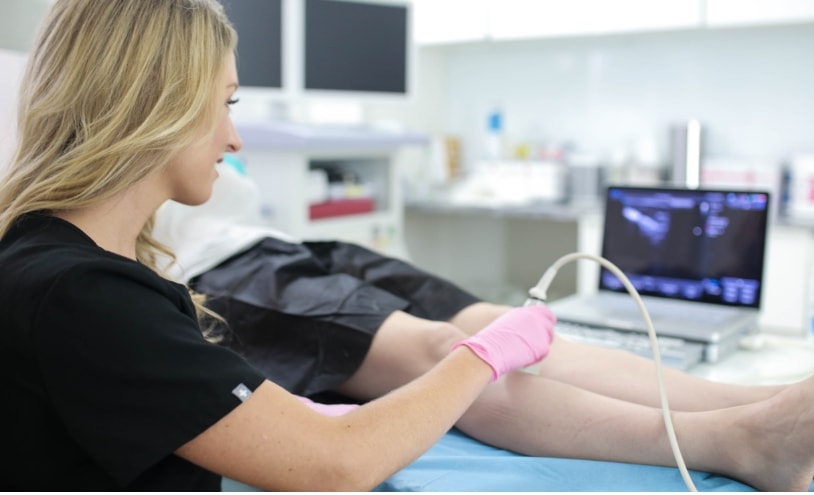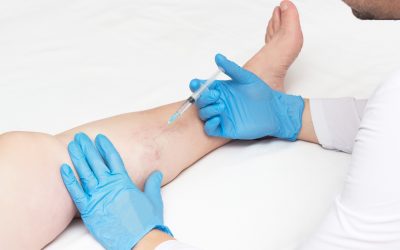Vein Treatment: A New Standard of Care
Are you tired of living with the discomfort and unsightly appearance of spider veins and varicose veins? Maryland Vein Treatment is here to offer you a new standard of care, revolutionizing the way vein conditions are diagnosed and treated. Led by board-certified vein doctors, we specialize in minimally invasive vein treatments, such as sclerotherapy, endovenous laser ablation, radiofrequency ablation, VenaSeal, and ambulatory phlebectomy. In this article, we shed light on the latest standards of vein care and how they can benefit you.
The Old Way vs. the New Standard
For years, the treatment of vein conditions involved outdated and invasive surgical procedures that often left patients with significant discomfort and involved hospitalization. Traditional vein surgeries, such as vein stripping and ligation, were once the norm. These procedures required large incisions, general anesthesia, and hospital stays. Patients would often experience pain, scarring, and prolonged downtime, making the process more daunting than the vein condition.
Enter the new standard of care: minimally invasive vein treatments. These innovative procedures have revolutionized the field of vein care by offering a safer, more comfortable, and highly effective alternative to traditional surgery. Minimally invasive treatments prioritize patient well-being and have become the gold standard for addressing vein conditions. They have ushered in a new era in which individuals no longer need to endure the pain and inconvenience associated with vein surgeries.
Why Vein Surgeries Are Now Obsolete
They Don’t Always Treat Underlying Vein Disease
Traditional vein surgeries, once considered the primary treatment for vein conditions, have become obsolete for several compelling reasons. Firstly, they often fail to address the root cause of vein problems effectively. While surgeries like vein stripping and ligation may remove visible varicose veins, they do little to treat underlying vein disease, such as chronic venous insufficiency (CVI). Without addressing the core issue, the risk of vein condition recurrence remains high, leaving patients unsatisfied with long-term results.
They Are Extremely Invasive & Risky
Another critical drawback of vein surgeries is their invasiveness and associated risks. These procedures typically require large incisions, general anesthesia, and hospitalization. The recovery process can be painful and lengthy, often involving extended periods of restricted activity. Moreover, the risks involved in surgical interventions include infections, blood clots, and nerve damage, making them less attractive options for patients seeking a safer and more comfortable treatment experience.
Minimally Invasive Vein Treatments Are Easily Available
In contrast, minimally invasive vein treatments have gained prominence due to their superior benefits. These procedures, such as endovenous laser ablation, radiofrequency ablation, and VenaSeal, are readily available and offer a safer, more comfortable alternative to traditional surgeries. They require only small incisions or no incisions at all, minimizing scarring and discomfort. Patients can typically resume their normal activities quickly, with a reduced risk of complications. Minimally invasive vein treatments have become easily accessible, providing individuals with a more effective approach to treating vein conditions.
Drawbacks of Vein Surgeries:
- Limited effectiveness in treating underlying vein disease.
- High invasiveness and associated risks.
- Requirement for large incisions and general anesthesia.
- Prolonged hospitalization often necessary.
- Painful and lengthy recovery period.
- Increased risk of infections, blood clots, and nerve damage.
- Frequent recurrence of vein conditions.
- Unsatisfactory long-term results for many patients.

We know health insurance is confusing so we will help you check if you’re covered:
FREE Coverage Checker:
Why Minimally Invasive Vein Treatments Are Now the Gold Standard
They Address the Root Cause of Vein Problems
Minimally invasive vein treatments have the ability to address the root cause of vein problems effectively. Unlike traditional vein surgeries that often focused solely on the visible symptoms, minimally invasive procedures, such as endovenous laser ablation and radiofrequency ablation, target the underlying vein disease, such as chronic venous insufficiency (CVI). By treating the source of the issue, these treatments significantly reduce the risk of vein disease recurrence, providing patients with more lasting relief.
They Are Safer And More Effective
The safety and effectiveness of minimally invasive vein treatments are another reason for their widespread adoption. These procedures typically involve smaller incisions or no incisions at all, reducing the risk of complications and infections. Anesthesia requirements are minimal, contributing to a safer overall experience. Moreover, minimally invasive treatments have demonstrated high success rates in alleviating vein-related symptoms and improving cosmetic outcomes, making them the preferred choice.
They Are More Convenient for Busy Individuals
In today’s fast-paced world, convenience is a significant factor in healthcare decisions. Minimally invasive vein treatments offer busy individuals a more convenient option for addressing their vein conditions. These procedures generally require shorter recovery times, allowing patients to return to their daily activities more quickly. With less downtime and a reduced risk of post-operative discomfort, minimally invasive treatments fit more seamlessly into the schedules of those with demanding lifestyles.
Benefits of Minimally Invasive Vein Treatments:
- Effective in treating the root cause of vein conditions.
- Safer and less invasive compared to traditional vein surgeries.
- Smaller incisions or no incisions, minimizing scarring.
- Reduced risk of complications and infections.
- Minimal anesthesia requirements for added safety.
- High success rates in alleviating symptoms and improving appearance.
- Shorter recovery times, enabling a quicker return to daily activities.
- Ideal for individuals with busy schedules.
- Lower risk of vein condition recurrence.
- Enhanced patient satisfaction and long-term results.

Visit Our Maryland Vein Treatment Centers
The Maryland Vein Treatment Approach to Vein Care
Initial Consultations to Evaluate Signs & Symptoms
Your journey with Maryland Vein Treatment begins with an initial consultation. During this crucial first step, our experienced board-certified vein doctors take the time to listen to your concerns and evaluate your signs and symptoms. We understand that vein conditions can vary widely from person to person, and your experience is unique. Our goal is to gain a thorough understanding of your condition and how it affects your daily life.
Duplex Ultrasound to Diagnose Root Cause
To provide you with the most accurate diagnosis, we utilize advanced diagnostic tools, with duplex ultrasound being a cornerstone of our diagnostic process. This non-invasive imaging technique combines traditional ultrasound with Doppler ultrasound to visualize the blood flow in your veins. By using duplex ultrasound, we can pinpoint the root cause of your vein condition, such as chronic venous insufficiency (CVI). We can examine the direction of blood flow and curate personalized treatment plans.
Personalized Treatment Planning
At Maryland Vein Treatment, we believe that every patient deserves a personalized approach to their vein care. Once we’ve diagnosed the underlying cause of your vein condition, our medical team curates a personalized treatment plan that aligns with your goals and preferences. We take into account factors such as the severity of your condition, your medical history, your lifestyle, and your insurance and budget to ensure your treatment plan is tailored to you.
Minimally Invasive Vein Treatments
- Effective in treating the root cause of vein conditions.
- Safer and less invasive compared to traditional vein surgeries.
- Smaller incisions or no incisions, minimizing scarring.
- Reduced risk of complications and infections.
- Minimal anesthesia requirements for added safety.
- High success rates in alleviating symptoms and improving appearance.
- Shorter recovery times, enabling a quicker return to daily activities.
- Ideal for individuals with busy schedules.
- Lower risk of vein condition recurrence.
- Enhanced patient satisfaction and long-term results.
Support for Recovery & Aftercare
Your journey with Maryland Vein Treatment doesn’t end with the procedure. We understand that the period following your treatment is crucial for your full recovery and long-term success. Our vein doctors provide support for your recovery and aftercare. We work closely to monitor your progress and address any questions or concerns. Our commitment to your well-being extends beyond the treatment room, and we are here to support you every step of the way.
Visit Maryland Vein Treatment for Modern Vein Care
Maryland Vein Treatment is led by board-certified vein doctors who have undergone rigorous training and passed comprehensive exams to earn their credentials. This ensures you receive the highest quality care and the most up-to-date treatments available. To make your experience as seamless as possible, we also offer free insurance verification before your first appointment. Our team will work with you to ensure you receive the maximum benefits from your insurance plan, helping you minimize out-of-pocket expenses.
Our medical center for vein treatment is conveniently located at 10215 Fernwood Rd, Suite 301, Bethesda, Maryland, just outside of Washington, DC in Silver Spring. This location ensures our services are easily accessible to residents of the Washington, DC metropolitan area. Contact us today to schedule your consultation and experience advanced, comprehensive vein care.



